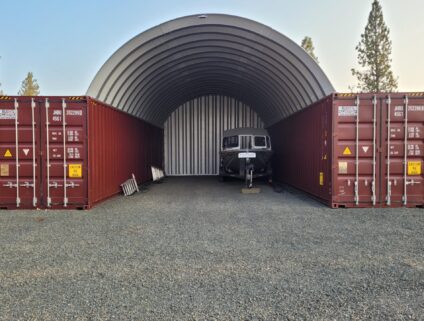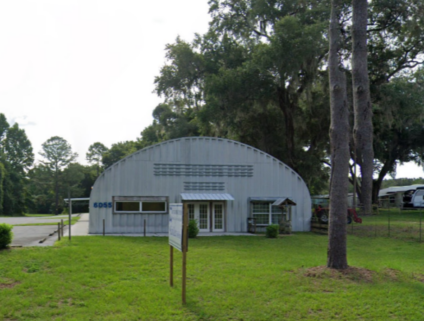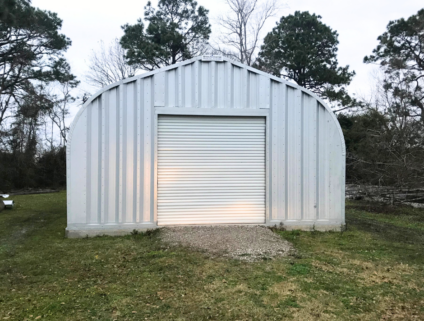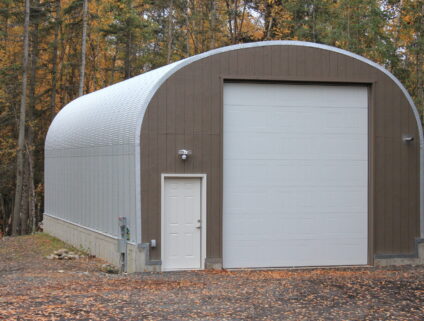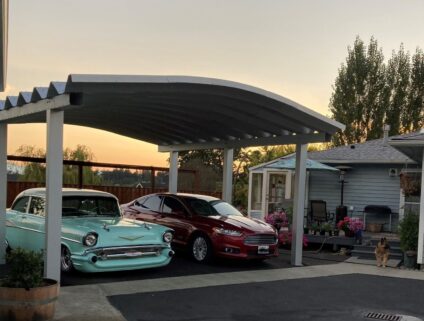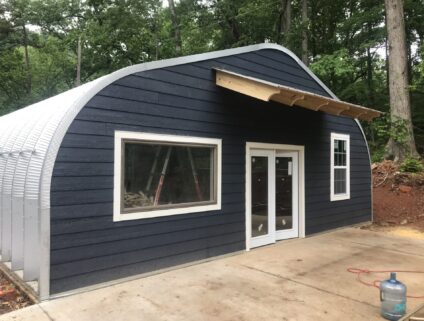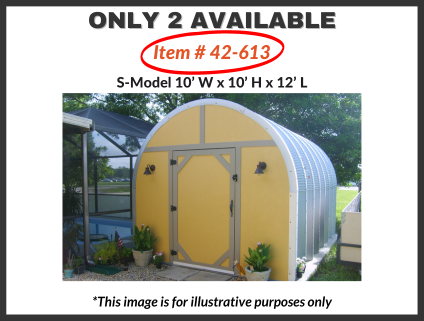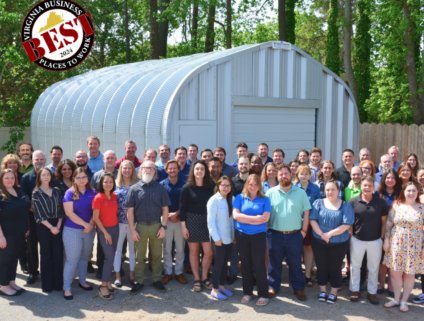Man Constructs Energy Efficient Quonset Hut™ Lodge

When Andy Thompson sees massive water bombers flying over his lodge, lightly brushing the treetops on their way to yet another forest fire, it’s a grim reminder of just how vulnerable manmade structures are to the wrath of Mother Nature. That imagery alone confirms his decision to construct his energy-efficient Quonset HutTM lodge using a SteelMaster building kit.
Thompson designed the building to cost less than $150,000. He needed this lodge to be super energy efficient and durable enough to handle any natural event.
Thompson lives in the extreme northern region of the world where temperatures can drop as low as -31 degrees Fahrenheit, forest fires are frequent and strong earthquakes are possible.
They recently experienced a 5.7 magnitude earthquake and something that would not be harmed by airborne sparks and lit material from the forest fires.
Not only did Thompson factor in the current weather conditions, he is equally concerned about climate change and how that can potentially create even more extreme weather events in the future including flooding and high winds.
To make sure his building could withstand any natural weather event, Thompson upgraded his energy-efficient Quonset Hut lodge to 18 gauge steel for increased durability. This is not mandatory because SteelMaster’s Quonset Hut building kits are already durable by design. In some areas, thicker steel is advisable to make the building even stronger.
“The energy performance of the structure in extremely cold temperatures has been stellar,” says Thompson. “And the structure is so airtight the doors can barely be pushed open by a full-grown man—that’s almost as airtight as an aircraft!”
What’s his secret? Although SteelMaster’s buildings do not require insulation, in an area that experiences such frigid temperatures, putting in insulation is certainly advisable. Thompson says a combination of gaskets and spray foam is what enabled him to create adequate insulation for the energy-efficient Quonset Hut lodge.
The lodge, which doubles as the welcome center and common utility building for a campground, is about 3, 500 square feet. The design incorporates passive solar strategies with a passive solar slab system that uses an electric boiler and solar thermal gains to circulate heat energy throughout the building. The interior was also thermally isolated with fiberglass-reinforced nylon rods instead of steel rods.
The building includes a storage loft on the quasi-second story that is used as a sleeping area, two showers, two bathrooms, two bedrooms and a kitchen/living and dining room.
“The extraordinary economy and energy efficiency of the structure is the chief selling point here,” says Thompson.
He was so satisfied with this design, he is planning to construct a similar building for a client nearby.
Not only has this energy-efficient Quonset Hut saved Thompson money during construction, he will save money over time in energy costs.
He saves hundreds of dollars each year because the entire Quonset Hut, even after heating a home during brutal winters and powering two electric vehicles, still consumes less energy than over 90% of the homes in their region.
Categories
Tags

